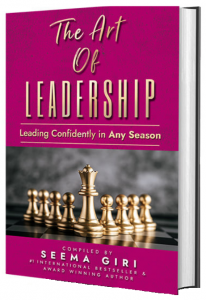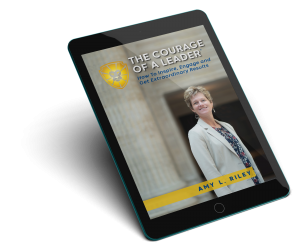Your Leadership Legacy
Of the thousands I’ve leaders I’ve worked with, the most powerful ones – the ones who achieve the most extraordinary results – are those who’ve defined their leadership legacy.
A leadership legacy is an aspiration about how you want to be known or about what you want to create. A leadership legacy is something that you can start living into right away. It can be an initiative, set of products, or improved processes you leave behind. It can also be a leadership trait for which you want to be known and foster in the organization.
Examples of leadership legacies include a fully optimized enterprise-wide software system, an innovative culture, and the creation of teams that operate with trust and transparency. With any of these there is work to be done in the moment like defining what fully optimized means, rewarding innovative behaviors, and creating a shared dashboard. There is also a legacy of work, skills, and thought processes that will be left behind such as real-time data accessible anywhere in the organization, processes that encourage innovation, and employees who know how to be authentically trusting with others.
There is great value in defining a leadership legacy. A legacy will help you set priorities, provide you with guidance, and keep you tuned into what will serve the greater good. Your legacy comes from your authentic self, is in line with who you are, and can have you at times act bigger than your ego or any other human consideration.
I worked with a leader, Maria, who felt pressure to speed up system implementation timelines and give in to a certain outspoken and passionate senior leader. Yet, when I encouraged Maria to ask herself what her legacy of a fully optimized enterprise-wide system would want, she had to respond with “more dialogue and benchmarking.” She knew the functional leaders needed more information about the capabilities and options for the system from companies who had been through the process they were embarking upon.
Maria stayed committed to her aspiration, put her personal discomfort aside, and made the career risky move to push back against a senior leader. And, it got shaky for a while. Some, who had previously been on board, questioned her decision to go up against a high-powered leader.
It was the first in a string of decisions where Maria had to look to her legacy – and not her self-protective instincts – for guidance. It wasn’t an easy time, yet she stuck with her consistent messaging, kept working the process and her aspirations and big picture commitment prevailed.
The system was implemented and fully optimized by year two, which represents a very impressive timeline for systems of this nature. Several functional leaders told Maria they were glad they took the time upfront to learn about and workout key design decisions and implementation points. And, most importantly, the cross-functional leaders in this organization were connected, aligned, and operating more cohesively than ever before allowing for faster and better solutions for customers.
You can start living and leaving behind your legacy, right now, today. Doesn’t matter if you’re an emerging leader or have a small team. You have a sphere of influence and can begin to leverage it right away. Define your leadership legacy. Then, start living it by leveraging your strengths and playing where you know you provide value. Expand from there.
What’s your leadership legacy?















 A Summary of The Courage of a Leader® 4 Pillars
A Summary of The Courage of a Leader® 4 Pillars




